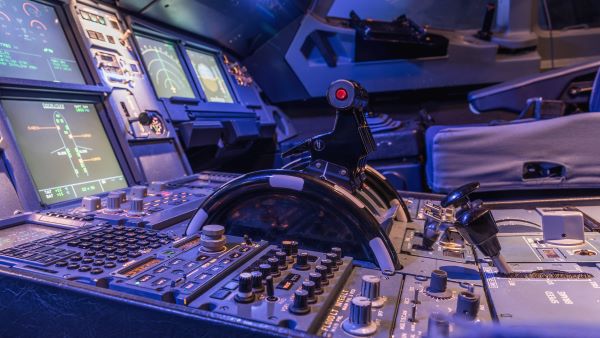The electronics manufacturing industry has consistently developed miniaturised components that play crucial roles in navigation, radar and guidance, as well as aerospace electronics such as communication systems, avionics controllers, cockpit displays, propulsion systems and more.
In aviation, these compact devices not only reduce component manufacturing costs, making the production of advanced aerospace technology more economical, but they also improve performance and efficiency.
The compact nature of these components enables easy integration into existing platforms, as well as multiple functions within one system. However, one of the most significant benefits is weight reduction, which leads to better fuel efficiency and range. In fact, miniaturised electronics have already begun to transform aircraft design, allowing for the development of lighter planes that benefit from increased speed, range and payload capacity compared to traditional aircraft.
So, how are these components being used in the aerospace field, and what challenges do electronics manufacturers need to consider when developing them?

Three applications in aerospace electronics
There are a multitude of applications for miniaturised electronics in aerospace - from satellites, drones and unmanned aerial vehicles (UAVs) to radiofrequency components, wearable devices for pilots and communication or power systems.
However, there are three primary categories driving many of the advances in miniaturised electronics for aerospace: integrated circuits (ICs), microelectromechanical systems (MEMS) and advanced batteries.
1. Integrated circuits
Many types of ICs are used across various aerospace applications. These high-performance processors receive input from various sensors and navigational aids, perform complex calculations and control an aircraft’s numerous subsystems.
For instance, microprocessors play a vital role in flight control and data processing systems, such as the glass cockpit that replaces traditional analogue instruments with digital displays. These state-of-the-art systems ensure the efficient management of an aircraft’s operations by providing pilots with real-time data and better situational awareness.
Power management ICs (also known as PMICs) are specialised circuits that manage and distribute power efficiently within electronic systems, ensuring each component receives the optimal current and voltage for its operation. In aerospace electronics, PMICs are crucial for extending battery life, reducing energy consumption and improving system reliability - for example, in satellites.
2. Microelectromechanical systems (MEMS)
MEMS combine electronic and mechanical components and typically have dimensions ranging from one to 100 microns (millionth of a meter). These tiny mechanical devices perform a variety of functions in aerospace electronics, such as sensing, actuating and controlling. Compared to traditional mechanical systems, MEMS provide many benefits, such as higher accuracy thanks to their enhanced sensing capabilities and improved reliability due to fewer moving parts.
In aerospace, MEMS have a wide range of applications - including gyroscopes for attitude measurement, accelerometers for navigation control, microvalves for controlling fluid flow in engines, temperature sensors for air conditioning units and pressure sensors for fuel management systems.
3. Advanced batteries
Thanks to their compact, powerful and long-lasting capabilities, advanced battery technologies - including lithium-ion (Li-ion) and lithium-polymer (Li-polymer) batteries - have revolutionised energy storage in aerospace electronics. For applications such as satellites and unmanned aerial vehicles (UAVs), where space and weight constraints are critical, these batteries offer higher energy density and extended cycle life, making them extremely valuable.
Solid-state batteries (which employ a solid electrolyte instead of a liquid one), in particular, have the potential to advance the performance and safety of aerospace batteries. These advanced battery technologies have had a significant impact on the development of aircraft, reducing the risk of leakage and thermal runaway to offer a wider operating temperature range, increase safety and pave the way for a more eco-friendly and sustainable aviation industry.
Challenges for electronics manufacturers
With smaller and more complex components come various technical, regulatory and security issues that electronics manufacturers in the aerospace sector must tackle.
For one, producing miniaturised electronics requires advanced manufacturing techniques and precision. Electromagnetic interference (EMI) generated by certain components also poses a challenge, as it can disrupt the operation of other systems.
However, one of the greatest technical obstacles to producing miniaturised electronics for aerospace is heat dissipation. The extreme temperatures and severe conditions encountered in flight can lead to component failure, so proper heat management is essential for the optimal performance and longevity of these electronic devices.
Manufacturers must also address cyber security and data privacy concerns, as well as ensure compliance with international standards and regulations. Design traceability and visibility are key here: if a component fails, it is vital to be able to trace where, how and why this has happened to ensure aircraft safety.
Author details: Phil Simmonds, CEO of EC Electronics.
- EC Electronics provides a range of electronics manufacturing services, including PCB and cable assemblies and complete electronics box builds, for the aerospace sector. The company manufactures electronics to the highest quality levels, including IPC-A-610 standards for PCB assemblies and IPC/WHMA-A-620 for cable assemblies to ensure optimal performance.













